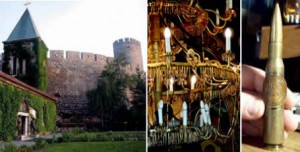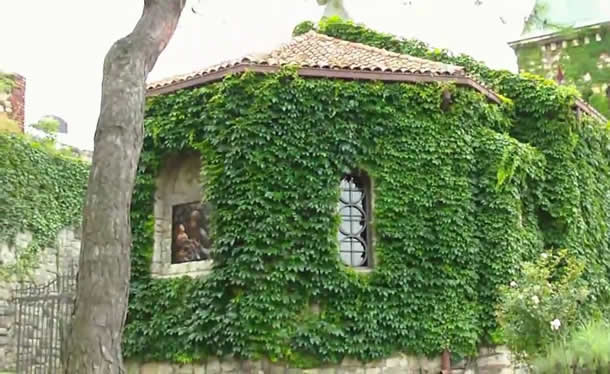Call it the art of war.
No, not military strategy but the simple creativity of soldiers who used a lull in the fighting and whatever was at hand to preserve their sanity and remind themselves there was still beauty in this world. One of the best examples is in the Crkva Ruzica (Rose Church) in Belgrade, Serbia, part of the former Yugoslavia.
Built inside a fortress in the early 1400’s, the original chapel was demolished in 1521 by invading Turks who later rebuilt the structure. For more than a hundred years, it was used by the conquerors to store gunpowder and ammunition.
By 1867 — the year Canada became a country — the building was once again a church. The new century arrived and Serbians fought alongside England and the United States during World War 1. Though heavily damaged by Austrian bombs launched across the Danube River, the chapel survived and provided spiritual sanctuary for soldiers who returned from the front lines.
But those soldiers didn’t arrive at the church empty-handed. In the trenches, they used the only materials they had to craft two incredible chandeliers made entirely of spent shells, sabres, and cannon parts. Somehow, they managed to get their one-of-a-kind creations to the chapel which was renovated extensively in 1925. Today, people travel from all over to see the ivy-covered Rose Church and how the unique fixtures continue to shed a welcoming light that facilitates worship and changes of the heart.

In a spiritual context, the lives followers of Christ are called to lead resemble what’s now known as “trench art” — things of beauty fashioned from the remnants of conflict or its consequences. That perspective begins with the realization that conflict is inevitable, whether it’s the inner turmoil caused by the warring of our spiritual and human natures, strife within our significant relationships, or even hostility from perfect strangers who are anything but perfect.
For me, one of the most comforting Bible passages is the apostle Paul’s stark admission that he was absolutely wretched because of his habitual sin. That, from a guy who got a personal appearance from the risen Jesus and still messed up continually while leading others. “I want to do what’s right,” he writes, “but I can’t. I want to do what’s good, but I don’t. I don’t want to do what’s wrong, but I do it anyway.
“I love God’s law with all my heart. But there’s another power within me at war with my mind… Oh, what a miserable person I am! Who will free me from this life dominated by sin and death? Thank God! The answer is in Jesus Christ our Lord. So you see how it is: In my mind I really want to obey God, but due to my sinful nature I’m a slave to sin.” (Romans 7:18-25)
Like ours, his battle was continual. But he wasn’t paralyzed by his recurring sin, he was empowered by the forgiveness of God. He kept going, and kept fighting, using the debris of his own battles and the Holy Spirit’s power to fashion a life of love and service that he would later call “God’s masterpiece” (Ephesians 2:10) Labeling himself “the worst sinner of them all” for persecuting Christians in his early days, he said, “God had mercy on me so Christ could use me as a prime example of his great patience with even the worst sinners. Then others will realize they, too, can believe in him and receive eternal life.” (1 Timothy 1:15,16)
Like Paul, we can use the seemingly useless remnants and reminders of our spiritual battles to learn, grow and fashion a unique means of showing others “the glorious light of the Good News” about salvation found in Christ, and how the great power of that light within us is from God, not ourselves.” (2 Corinthians 4:4,7) We can turn our ever-continuing fight with sin into a forceful and beautiful testimony to the love, grace, and patience of the One who will eventually achieve for us a victory we can’t win by ourselves. As Paul says after confessing his divided heart, “nothing can separate us from the love of God” because Jesus, who died for our sins, is with God, asking that we join Him (Romans 8:34)
Meantime, when we and other believers put together the unflinching stories of our struggles, we craft a compelling way to illuminate in the church God’s majesty and how we glorify Him with our weaknesses, as well as our strengths. Sometimes we have the most serious effect when we make Light of our sin.

